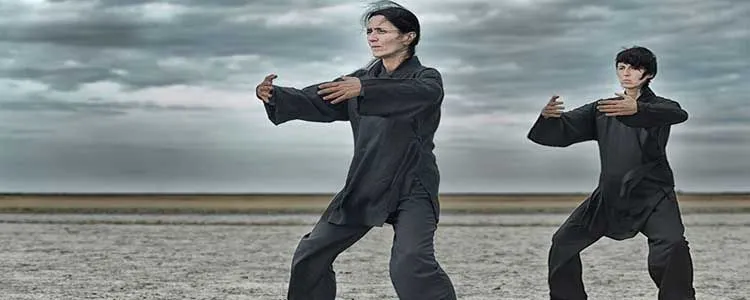The traditional Chinese medicine (MTC) is a style of traditional medicine based on more than 2,500 years of Chinese medical practice, including various forms of herbal medicine, acupuncture, massage (tui na), exercises (chi kung), and dietary therapy. But recently it has also been influenced by modern Western medicine.
Traditional Chinese medicine is widely used in the Sinosphere, where it has a long history, and has recently begun to “gain global recognition.” One of the basic principles of TCM is that “the body’s vital energy (ch’i or qi) circulates through channels, called meridians, which have branches connected to the body’s organs and functions.
The concepts of the body and disease used in TCM reflect its ancient origins and its emphasis on dynamic processes on material structure similar to European humoral theory.”
Table of Contents
What is chi kung?
It is a medicinal therapy of Chinese origin. In addition, it is a holistic system of coordination of body posture: movement, breathing and meditation that is used for the purposes of health, spirituality and martial arts training.
With roots in Chinese medicine, philosophy, and martial arts, gigong is traditionally seen as a practice for cultivating and balancing qi (the approximate pronunciation is chi), translated as “life energy.”
How is it practiced?
Focus on rhythmic breathing. As you prepare for chi kung, settle into a full, relaxed breathing rhythm before you begin practice. The quality of breathing is directly related to the quality of the practice. For most people, breathing is limited by habitual patterns and stored tensions.
- Your goal is a state where the breath comes in and out gently.
- Do not exhale hastily, do not inhale with difficulty.
- However, don’t force yourself or you’ll just generate a new form of tension and distract yourself from the practice.

Stretch your breath. Stretching your breath will help you relax more and engage better with chi kung.
- To stretch your breath, start with a simple inhalation to count to six, hold up to three, exhale up to six, hold up to two, repeat.
- Whenever you feel short of breath or tense, let the pattern go away until you feel comfortable.
- As it gets easier, expand the breath to count to eight, ten, etc., holding half at the top of the inhalation and one-third at the bottom.
- After working your breath for ten minutes or so, relax at a natural pace.
Relax the mind. Relax the mind it is one of the most important things before practicing gigong. If our focus is dispersed, our energy will also be scattered. In addition, relaxing the mind is one of the most important skills that gigong will help you cultivate.
This is a skill that will not only bring you peace, but potentially help reduce blood pressure and stress levels.
- Don’t waste time and create tension by trying to force the mind to be silent.
- Focus your attention on observing your breathing.
- You can calm the mind as you stretch your breath.
Relaxes the body
- Release and relax the body very slowly, from head to toe, releasing tension as you go.
- Repeat three times.
- Every part of the body should feel comfortable and heavy – don’t get stiff and tense. Any muscle tension or anxiety should go away. Your body should feel like it’s sinking to the ground.
Move and breathe in unison. Chi kung or gigong it is movement and breathing in unison. In general, unless you are specifically trained to do otherwise for certain movements or shapes, you should maintain deep, relaxed, and even breathing. Because breathing and movements are linked, movements should be slow and keep that relaxation deeply ingrained.
Practice the sitting posture. Once you master the techniques of regulating the body and mind, you will be ready to start completing the gigong postures. The sitting posture is one of the most common and it can be practiced very often depending on the situation and the environment. Sitting posture will improve overall posture and promote a sense of confidence.
- Sit up straight in a chair with your feet on the floor.
- The legs should be separated.
- The torso will be at right angles to the thigh.
- Rest your eyes and mouth closing. Don’t try to smile, but let your mouth take a natural shape.
Benefits of Chi kung or gigong

The gigong is a powerful health system that has many benefits, among which are:
- Gigong can harmonize, strengthen and have a healing effect on the functioning of all internal organs and body systems.
- It increases the supply and flow of energy throughout the body. It can have a variety of rejuvenating effects and is believed to increase longevity and induce calm mental and emotional states.
- Initially, many movements focus on gently opening and stretching the joints and muscles of the body, releasing the tension that has often been there for years.
- It increases blood flow and energy, helps to completely nourish all parts of the body.
- It helps to fall asleep and sleep soundly all night.
- It helps you maintain health.
- It helps to better manage any health problems.
These are just some of the benefits you can experience in the early stages of the practice. As you become more and more aware, your body will begin to feel many more benefits.
Chi kung exercises
Here are two basic exercises you should exercise in chi kung:
First chi kung exercise: gentle rocking
Duration of 10 to 15 minutes.
- For five minutes, move both arms from your shoulders in a gentle swinging motion. The movement itself starts from the waist: twist from the waist as if your torso were a washcloth that you are draining.
- To begin with, move your arms back and forth through your torso and then back and forth.
- Keep your knees slightly bent. Let your hips sway. Let your mind clear.
Exercise gigong Two: The Rebound
At first, try this for one to three minutes.
- With your feet parallel and shoulder-width apart, bounce with your knees loose and your arms hanging on your sides like a wet noodle. They should feel empty and neutral.
- Keep your shoulders natural, don’t pull them back or drop them too far forward. You will feel a feeling of deep relaxation and your internal organs and the skin should hang down.
The combination of exercises one and two tones the organ system, which helps promote longevity.
